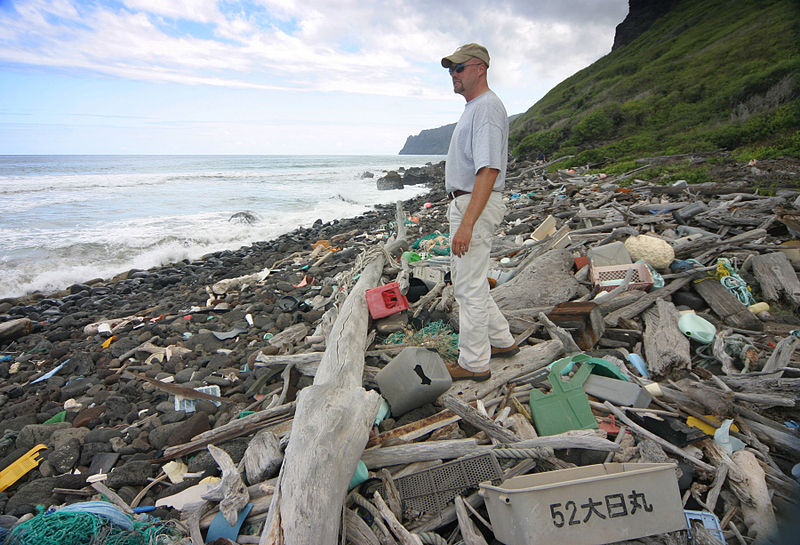An Ocean Destroyed – The Great Pacific Garbage Patch
April 25, 2018
The largest accumulation of offshore plastic, otherwise known as The Great Pacific Garbage Patch, is located between Hawaii and California. There is estimated to be between 1.15 and 2.41 million tons of plastic entering the ocean each year from the rivers, which has made the Great Pacific Garbage patch around 1.6 million square kilometers. This can be compared to twice the size of Texas or three times the size of France.
The reason why the plastic does not sink and go to the bottom is because plastic is less dense than the water, therefore it floats. The plastic makes its way offshore with transport by converging currents and finally accumulating in a garbage patch. One reason why the plastic is unlikely to leave the area is because the only way they would leave it would be to degrade into smaller microplastics under the effects of the sun, waves and marine life. When more and more plastics are discarded into the environment, the microplastics concentration in the Great Pacific Garbage Patch will only continue to increase.
The wind and current is always changing, which means that the Great Pacific Garbage Patch’s (GPGP) location and shape is also always changing. In order to see the whole entire patch, a fleet of 30 boats, 652 surface nets and two flights was made to gather aerial imagery of the debris. Around 1.2 million different plastic samples were found.
At least 84% of the plastic found in the GPGP contains at least one persistent Bioaccumulative toxic chemical. When the plastic is colorful, marine life may confuse it with food, causing them to encounter health issues and malnourishment. Over 700 species have encountered the marine debris and 92% of these interactions are with the plastic. Also, 17% of the species that have encountered the plastic were on the Red Lists for Threatened Species.
An example of how this is affecting ocean life at a dangerous rate can be seen with sea turtles. Sea turtles that live around the patch can have 74% of their diet made up of plastic. While they are eating the plastic, they are also getting caught in it because 46% of the garbage that is there is fishing nets.
Not only is this a problem for the marine life, this is also a problem for humans. When the animals eat the plastic and chemicals, and then we eat them, those chemicals then enter humans bodies. Although that may seem bad enough, its damage does not end there. Environmental damage from the plastic to marine ecosystems has come together to cost around 13 billion USD in beach cleanups and financial loss brought upon by fisheries.
The pollution of ocean waters with plastic is a very serious issue and should be addressed immediately. One way people can help out is to be more cautious about what they are putting into our environment and what they do with their garbage.
